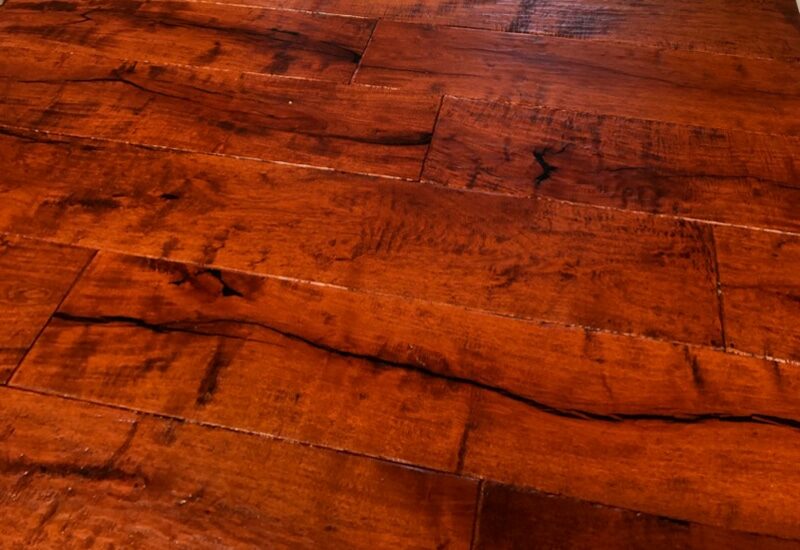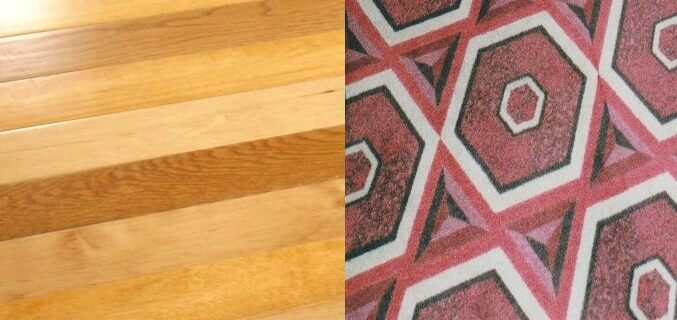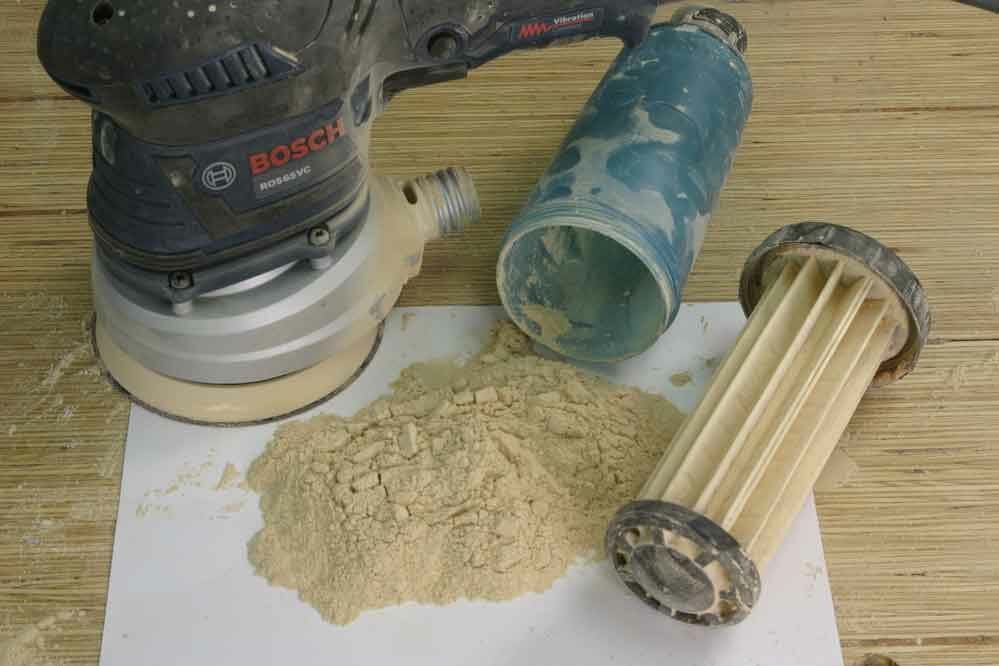London:
Nationwide:
Eco-Friendly Elegance: Sustainable Wood Floor Restoration in the UK
Posted on April 23, 2024
Wood Floor Restorations Blogs

Sustainable Elegance: Eco-Friendly Wood Floor Restoration Across the UK
In the world of interior design, the foundation of any room’s aesthetic begins quite literally at the ground level—the floor. Among the myriad of flooring options available, wood stands out for its timeless appeal, bringing warmth, elegance, and a natural charm to any space. However, not just any wood floor will do for discerning British homeowners and business owners; bespoke wood flooring offers a unique opportunity to tailor your space to exact specifications and preferences.
Bespoke wood floors are more than just a choice in décor; they are a statement of style and a commitment to quality. This personalised approach ensures that no two floors are alike, with each piece being crafted to suit the specific climate, usage, and aesthetic desires of its environment. Whether it’s a cosy cottage in the Cotswolds, a bustling café in the heart of London, or a historic hotel in Bath, custom wood flooring solutions can enhance the character of any British property.
This blog post explores the intricate world of bespoke wood flooring in the UK, delving into why customisation matters and how it transforms spaces. We’ll examine the various types of wood, finishes, and patterns that can be tailored to fit the unique style and functional needs of British homes and businesses. Join us as we journey through the beauty and practicality of custom wood floor solutions and discover how to bring this bespoke beauty into your own space.
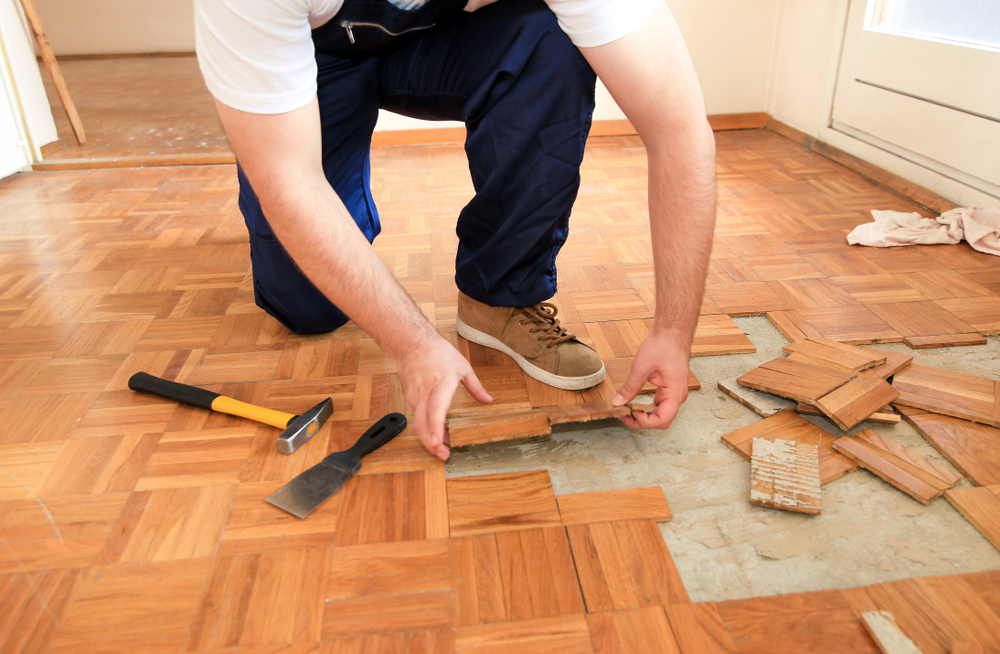
The Charm of Customisation
When it comes to creating a home or business environment that truly reflects individual style and meets specific functional needs, there’s nothing quite like the customisation of wood flooring. Custom wood floors offer a level of personalisation that cannot be matched by off-the-shelf options, providing a unique canvas on which property owners can express their personal taste and design vision.
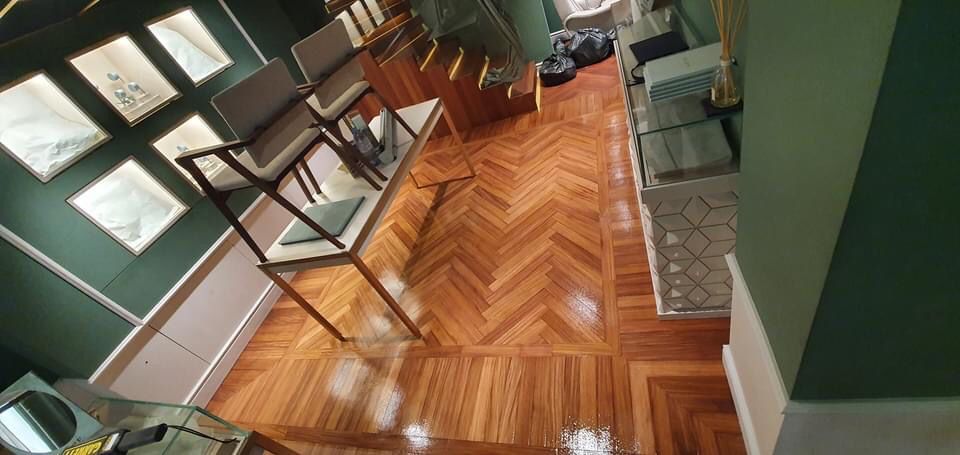
Personalising Your Space
Each piece of wood selected for flooring can be chosen based on its grain, colour, and texture, creating a harmonious fit with the rest of the interior design. The ability to specify dimensions, thickness, and the type of finish allows for an entirely bespoke installation that is tailored not only to the look but also to the lifestyle of the space. Whether it’s a hard-wearing surface needed for high-traffic areas or a delicate finish suitable for a quieter, more formal setting, customisation makes it possible.
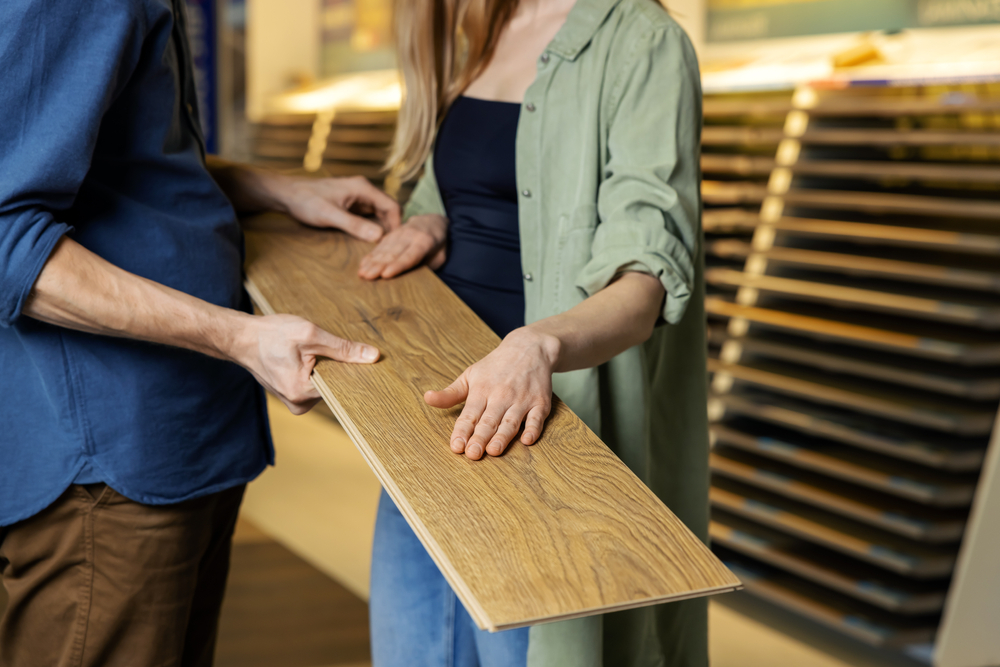
Variety of Wood Types and Finishes
The UK is home to a diverse range of wood types ideal for flooring. From the rich, deep tones of walnut to the light, airy feel of ash, each type of wood has its own unique characteristics. Beyond just the type of wood, bespoke flooring can be customised with various finishes that enhance the wood’s natural beauty and protect it from wear and tear. Options include oils that penetrate deeply to provide a natural, matte finish, lacquers for a glossy surface, and stains that can either accentuate or completely transform the original colour of the wood.
Custom wood floors also allow for creativity in the laying pattern. Traditional patterns like herringbone or chevron can add a classic touch, while more contemporary layouts, such as random or mixed-width planks, can create a modern look. This flexibility in design is especially valuable in renovation projects, where new floors must be integrated with existing architecture and décor themes.
By choosing bespoke wood flooring, British homes and businesses can achieve a perfect blend of functionality and aesthetic appeal that resonates with the building’s history and the owner’s personal style. This level of customisation not only enhances the beauty of a space but also adds value to the property, making it a worthwhile investment in the long run.
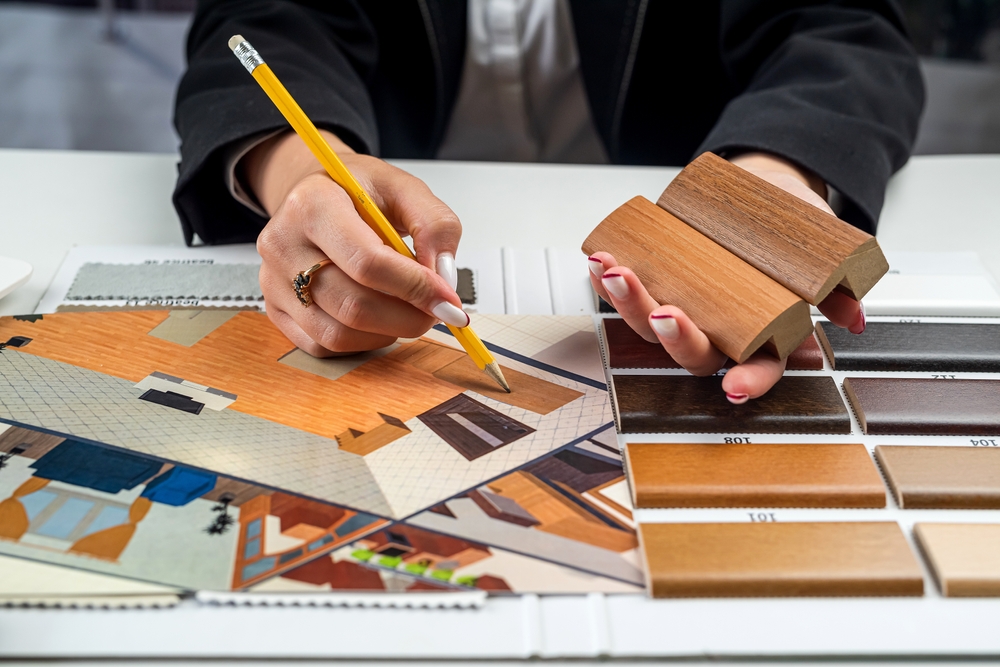
Evaluating Your Options
Choosing the right wood flooring for your British home or business involves considering various factors, from the type of wood to the specific characteristics that suit your climate and usage. This section will help you navigate through these considerations to make an informed decision that best fits your bespoke needs.
Hardwood versus Engineered Wood
The first decision in selecting your bespoke wood flooring involves choosing between hardwood and engineered wood. Both options have their merits and are suitable for different environments and budgets.
- Hardwood Flooring: Traditional hardwood floors are crafted from single pieces of wood. They offer unparalleled beauty and the potential to last generations if properly maintained. Hardwood is ideal for areas where longevity and the ability to refinish the floor multiple times are priorities. However, hardwood can be susceptible to changes in humidity and temperature, making it less suitable for areas like basements or bathrooms.
- Engineered Wood Flooring: Engineered wood consists of a top layer of hardwood affixed to several layers of a plywood core. This construction makes engineered wood floors more stable and less prone to warping in humid conditions, making them a good choice for a wider range of environments within the UK. Engineered floors can also be installed over underfloor heating systems, which are increasingly popular in modern British homes.
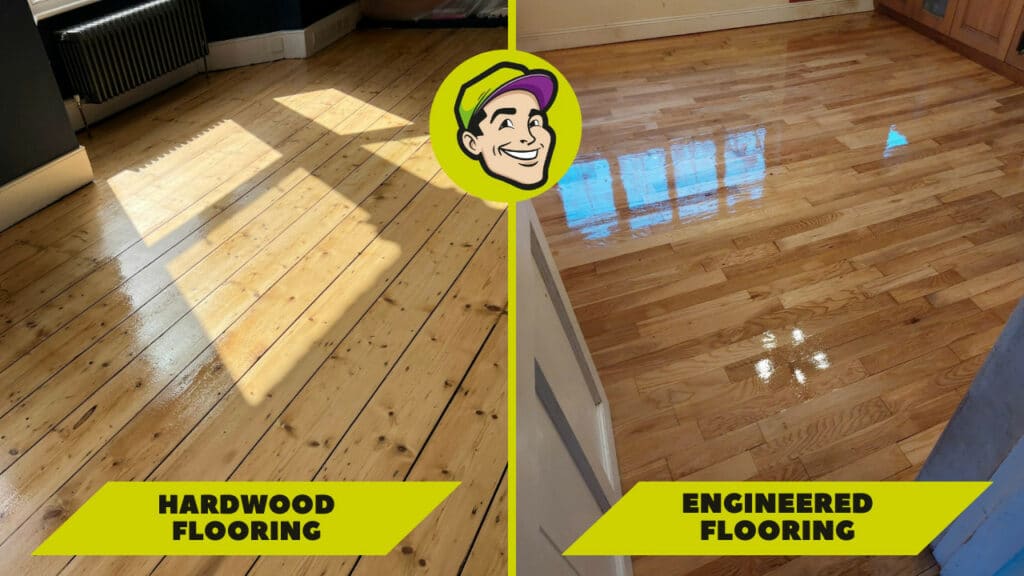
Selecting the Right Wood Species for Your Climate
The climate of your location in the UK can significantly influence the choice of wood species for your flooring. Wood reacts to temperature and humidity changes, so it’s crucial to select a type that aligns with your local climate.
- For More Humid Areas: If you live in a region with higher humidity, consider choosing a more stable wood species like oak or engineered wood options that handle moisture changes well.
- For Drier Climates: In drier areas, you can opt for a wider variety of hardwoods without as much concern for humidity-induced warping. Species like ash and beech, known for their hardness and durability, can be excellent choices.
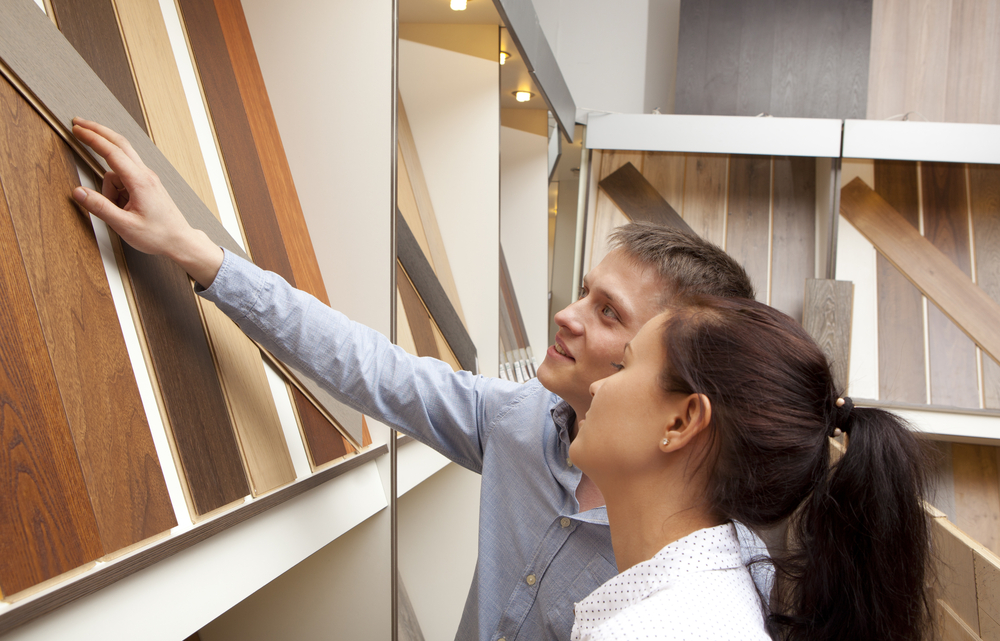
Understanding Wood Grades and Finishes
Wood grades determine the look of your floors and involve different levels of natural marks like knots and grain patterns. Higher grades offer a cleaner look with fewer imperfections, while lower grades provide a more rustic appearance with plenty of character.
Finishes play a crucial role not only in the floor’s aesthetics but also in its maintenance and durability. Oiled finishes penetrate the wood to enhance its natural colours and protect the surface, requiring more frequent maintenance but easier spot repairs. Lacquered finishes provide a harder, more protective surface that’s easier to clean but may require complete refinishing when worn.
By thoroughly evaluating these options, you can tailor your bespoke wood flooring to perfectly match both your aesthetic preferences and practical requirements, ensuring a beautiful, durable surface that enhances every step taken upon it.

Design Considerations
When incorporating bespoke wood flooring into British homes and businesses, the design phase is critical. It’s where aesthetic preferences align with functional needs to create a space that is not only beautiful but also practical. Here, we explore trending patterns, layouts, and colour schemes that suit British décor, ensuring your custom wood floor perfectly complements the style of your property.
Trending Patterns and Layouts
The layout and pattern of your wood flooring can dramatically affect the visual space and atmosphere of a room. Here are some popular choices:
- Herringbone and Chevron: These classic European patterns are increasingly popular in both modern and traditional British interiors. Herringbone creates a broken zigzag design, while Chevron offers a continuous V shape. Both patterns add a sense of elegance and history to a space.
- Wide Planks: For a more contemporary look, wide planks reduce the number of seams and help make a room feel larger and more open. This style works particularly well in spacious areas and is favoured for its modern appeal and ability to showcase the natural beauty of the wood grain.
- Mixed-Width Planks: Using planks of varying widths can create a bespoke, artisanal feel in a room. This layout is often seen in rustic or eclectic interiors and adds a unique character to the floor.
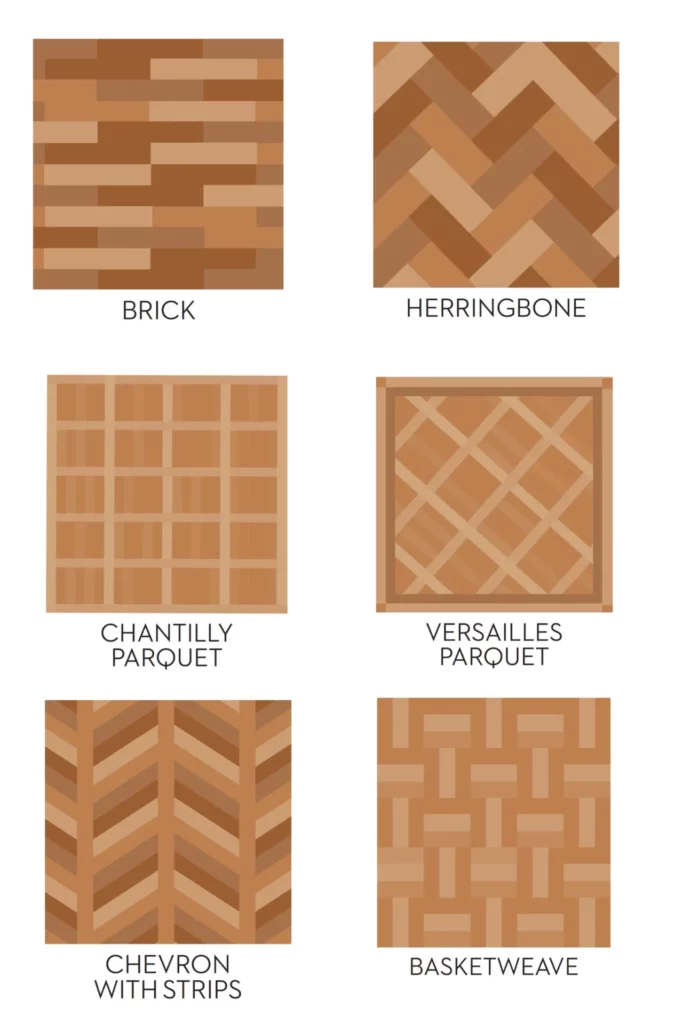
Colour Schemes That Complement British Décor
Choosing the right colour for your wood floor is crucial, as it sets the base tone for the entire interior. Here are some considerations:
- Light Woods: Ash, maple, and light oak can brighten up spaces and create an airy, open feel. These are excellent for smaller rooms or areas with limited natural light, commonly found in British homes.
- Dark Woods: Walnut or dark-stained oak offer richness and depth, making them suitable for larger, more formal spaces or to create a dramatic contrast with light-coloured walls and furniture.
- Grey and Whitewashed Woods: Trendy yet timeless, these options are versatile and match well with contemporary, minimalist, or coastal aesthetics, reflecting modern tastes within traditional British frameworks.
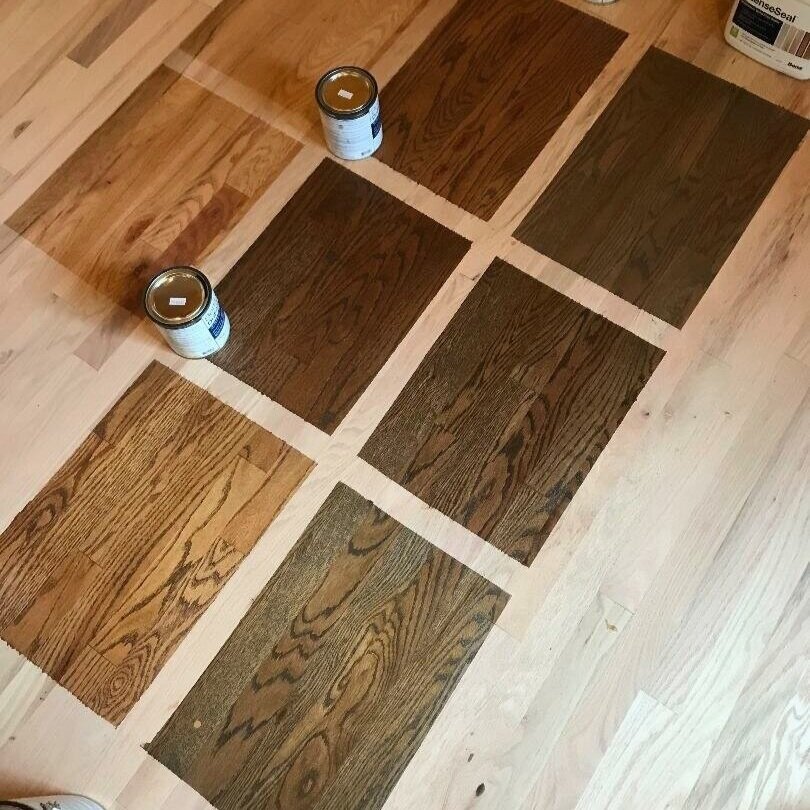
Incorporating underfloor heating
With the increasing popularity of underfloor heating in the UK, choosing wood flooring that can accommodate this feature is essential. Engineered wood is typically preferred as it conducts heat efficiently and handles temperature changes better than solid hardwood. When designing a floor over underfloor heating, attention must also be paid to the thickness of the wood and the type of finish to optimise heat transfer and maintain the wood’s stability.
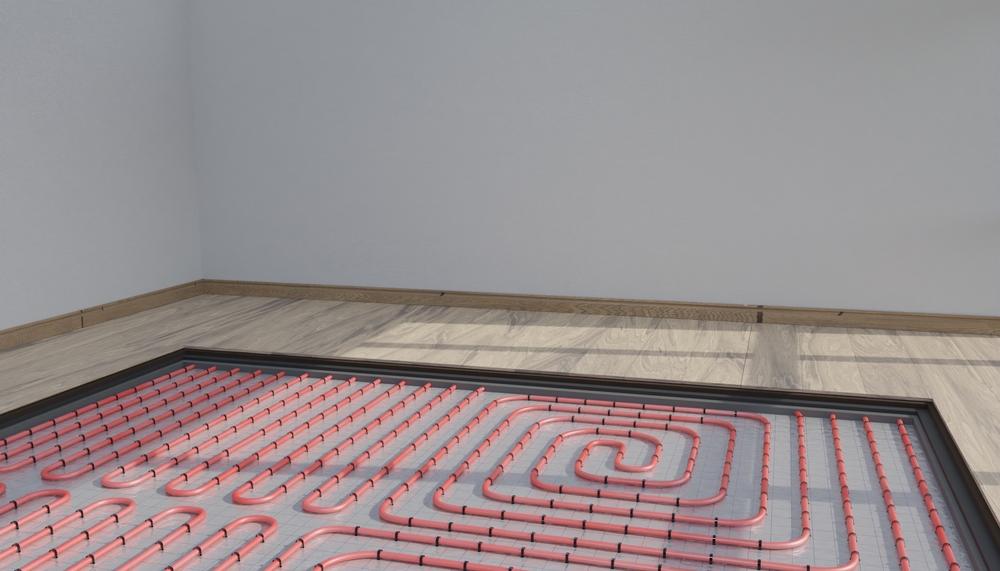
Acoustic Considerations
Especially in multi-story buildings or commercial spaces, considering the acoustic impact of wood flooring is crucial. Adding underlays that provide sound insulation can enhance comfort and reduce noise transfer, an important factor in densely populated areas or buildings with multiple occupants.
By addressing these design considerations, your bespoke wood flooring will not only be a visually striking element of your interior but also a perfectly adapted component of the building’s overall functionality and aesthetic harmony.
Installation Insights
Proper installation is crucial for ensuring the longevity and beauty of bespoke wood flooring. Understanding the process can help homeowners and business owners make informed decisions and prepare effectively. This section covers key aspects of the installation process, from preparation to completion.
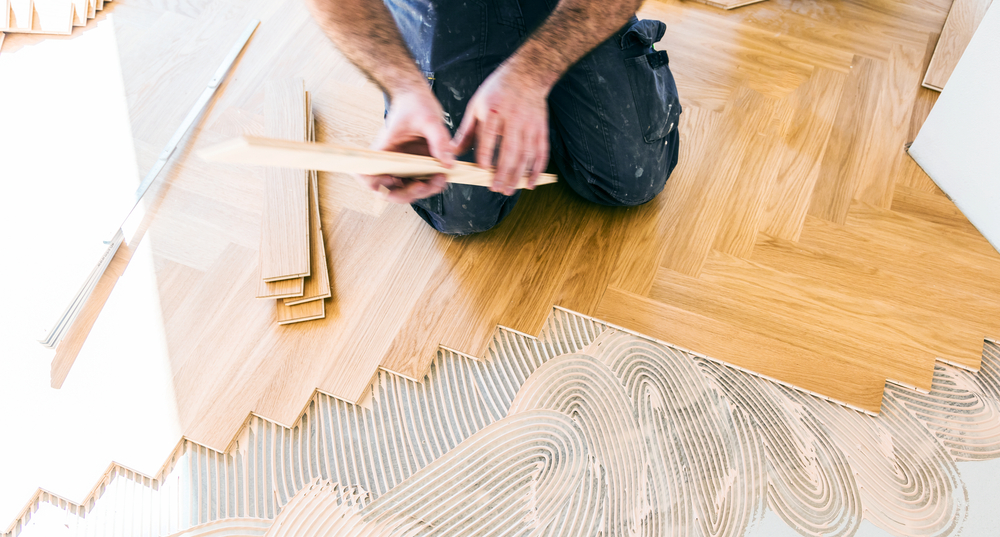
Preparing for Installation
- Assessing the Subfloor: The subfloor must be clean, dry, and level before installation begins. Any moisture issues should be resolved, and uneven areas must be corrected to prevent future problems with the flooring.
- Acclimatization of Wood: Wood flooring needs to adapt to the humidity and temperature of its new environment to prevent warping or gaps. Typically, the wood should sit in the room where it will be installed for several days.
- Tools and Materials: Ensuring that all necessary tools and materials are on hand before starting the installation can help streamline the process. This includes adhesives, nails, a saw for cutting pieces to fit, and a moisture barrier if required.
Step-by-Step Installation Process
- Layout Planning: Begin by planning the layout of the floor. Consider the direction of the planks, which is usually parallel to the longest wall or follows the path of natural light. This stage may also include deciding on specific patterns or designs.
- Installation of a Moisture Barrier: If applicable, lay down a moisture barrier to protect the wood from potential moisture coming from the subfloor.
- Laying the First Row: Start from the longest wall, making sure the first row is straight, as it will guide the placement of all subsequent rows. Leave a small gap between the wall and the planks to allow for wood expansion.
- Securing the Planks: Planks can be glued down, nailed, or clicked together depending on the type of wood flooring purchased. Each method has its own set of tools and techniques.
- Cutting to Fit: Measure and cut planks to fit at the ends of rows or around obstacles such as pipes or pillars.
- Final Rows: Installation of the final rows may require special tools like a pull bar or a tapping block to fit the planks snugly against the wall.
- Installation of Trim and Transitions: Install baseboards, thresholds, and transition strips where the new wood flooring meets other floor types or room thresholds.
- Finishing Touches: Apply any final finishes if the wood is unfinished. This might include staining, sealing, or applying additional protective coatings.
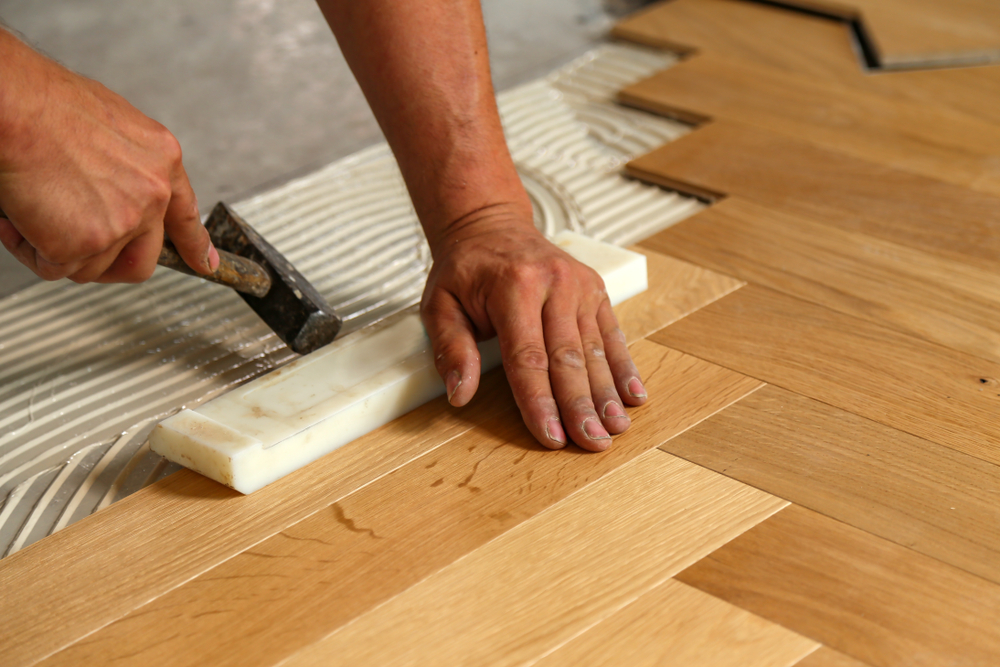
Post-Installation
- Ventilation: Ensure good ventilation for the first few days to allow any adhesives or finishes to cure properly.
- Cleaning: Clean the floor with products recommended by the flooring manufacturer to avoid damaging the wood.
- Setting Up Furniture: Wait at least 24 hours before moving furniture back into the room to avoid scratching the new floor. Use felt pads under furniture legs to protect the wood.
Understanding these installation insights not only prepares you for the process but also ensures that your bespoke wood flooring is installed with the care and precision it deserves, providing a beautiful and durable foundation for your space.

Sustainability and ethics
In today’s environmentally conscious world, selecting sustainable and ethically sourced wood flooring is more important than ever. This section explores how British homes and businesses can choose bespoke wood flooring that aligns with environmental stewardship and ethical practices.
Sourcing Ethically Produced Wood
- Certification Standards: Look for wood that has been certified by reputable organizations such as the Forest Stewardship Council (FSC) or the Programme for the Endorsement of Forest Certification (PEFC). These certifications ensure that the wood comes from responsibly managed forests that provide environmental, social, and economic benefits.
- Local Sourcing: Choosing locally sourced wood can reduce the carbon footprint associated with transportation. It also supports local economies and can help maintain the UK’s forestry industry through sustainable practices.
- Reclaimed Wood: Using reclaimed wood is another excellent way to enhance sustainability. Reclaimed wood floors are made from wood salvaged from old buildings, bridges, and other structures. This option not only recycles material but also offers a piece of history and unique character that cannot be replicated in new wood.
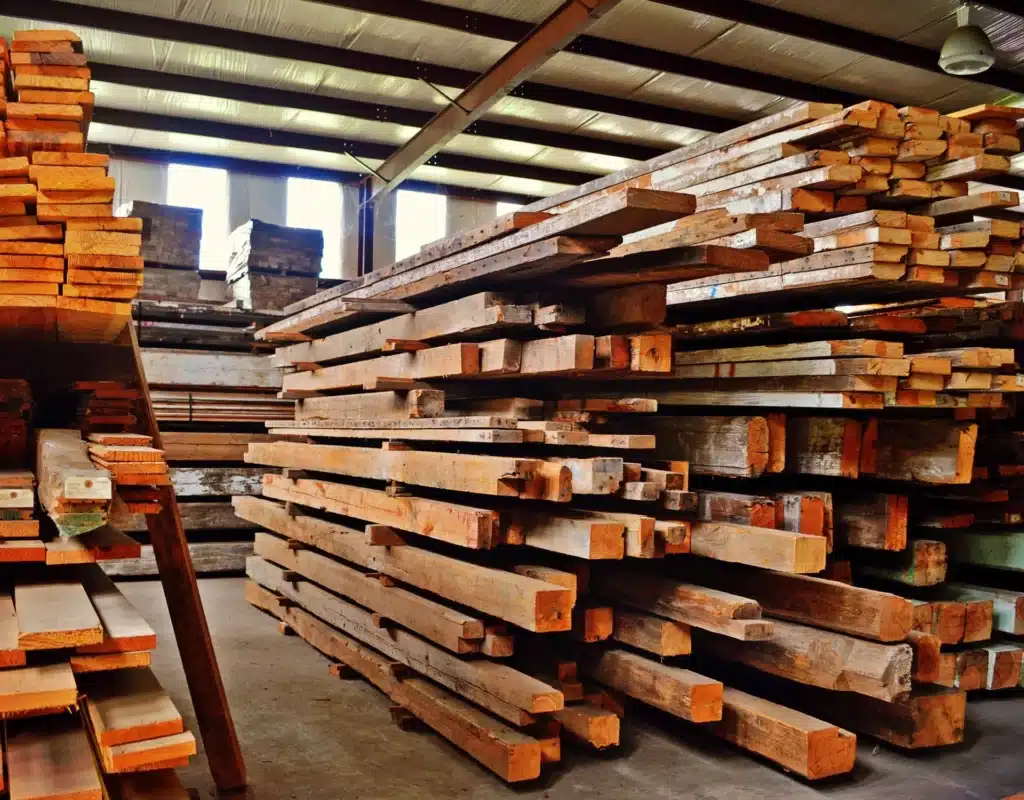
Environmental Impact of Wood Flooring
- Carbon Footprint: Wood is a natural carbon sink; it absorbs carbon dioxide from the atmosphere during its growth cycle. By choosing wood flooring, you’re effectively locking away carbon for the duration of the floor’s life.
- Production Processes: The environmental impact of producing wood flooring can vary significantly. Factors to consider include the energy used during production, the chemicals involved in treating and finishing the wood, and the practices adopted to minimise waste.
- Durability and Life Cycle: Durable materials like wood don’t need to be replaced often, which reduces the demand for raw materials and energy for manufacturing new products. Additionally, wood flooring can often be sanded and refinished several times, extending its life and reducing waste.
Ethical Considerations
- Labour Practices: Ethically sourced wood should also consider the human aspect, including fair labour practices and conditions for workers in the forestry and manufacturing sectors. Ensuring that wood is sourced from suppliers who adhere to ethical labor standards protects not only the environment but also the people involved in its production.
- Animal Habitats: Responsible wood sourcing helps maintain biodiversity by protecting habitats. Suppliers adhering to strict environmental standards ensure their operations do not adversely affect local wildlife and ecosystems.
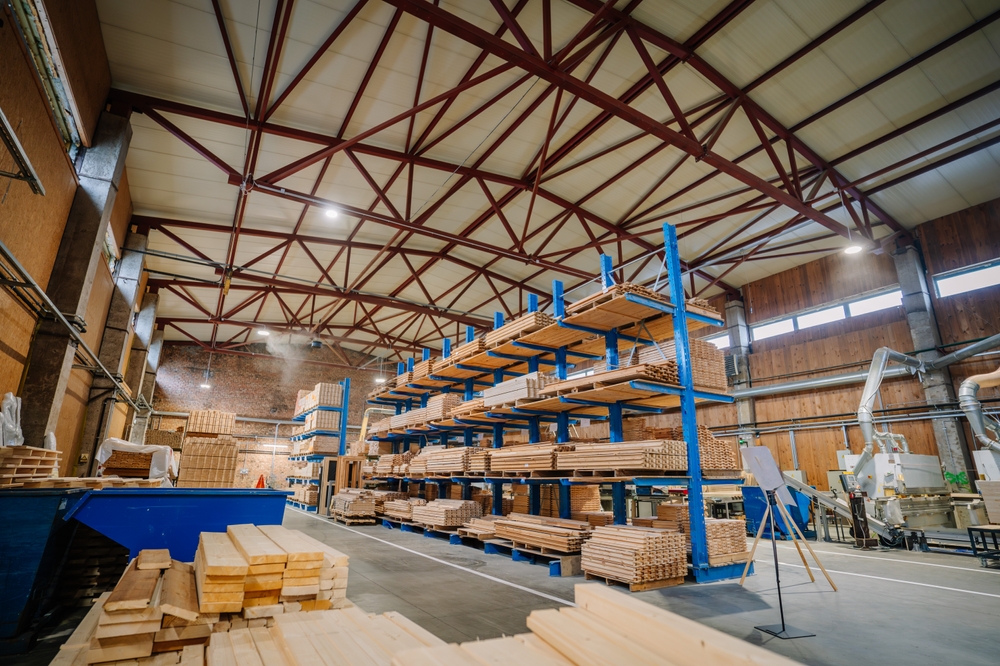
Promoting Sustainability Through Your Choices
- Educating Yourself and Others: Being informed about where and how your wood flooring is sourced can make a big difference. Share your knowledge with others to promote the demand for sustainable and ethical flooring options.
- Influence through Demand: By choosing sustainable and ethically sourced wood flooring, you influence the market by increasing demand and encouraging suppliers and manufacturers to adopt greener practices.
By prioritizing sustainability and ethics in your choice of bespoke wood flooring, you contribute to the preservation of the environment and promote fair practices in the industry, ensuring that the beauty of your floors extends beyond aesthetics to embody values that benefit the entire planet.

Maintenance and care
Proper maintenance and care are essential for preserving the beauty and durability of bespoke wood flooring in British homes and businesses. This section provides guidance on daily upkeep, seasonal maintenance, and addressing common issues to ensure your floors retain their charm for years to come.
Daily care tips
- Sweep or Vacuum Regularly: Dust, dirt, and grit can scratch the surface of wood floors over time. Use a soft-bristled broom or vacuum with a hardwood floor attachment to remove debris daily.
- Wipe Spills Immediately: Wood is susceptible to water damage, so wipe up spills promptly using a dry or slightly damp cloth. Avoid using excessive water or harsh cleaning products, as these can damage the wood finish.
- Use Mats and Rugs: Place mats at entrances and high-traffic areas to trap dirt and moisture from shoes. Use area rugs in areas prone to spills or heavy wear to protect the wood surface.

Seasonal Maintenance
- Humidity Control: Wood flooring can expand and contract with changes in humidity. Maintain a consistent indoor humidity level between 35% and 55% to minimise the risk of warping or gaps. Use a humidifier in the winter and a dehumidifier in the summer, if necessary.
- Inspect for Damage: Regularly inspect your wood flooring for signs of wear, damage, or moisture problems. Address any issues promptly to prevent further damage and maintain the integrity of the floor.
- Reapply Finish as Needed: Over time, the finish on wood floors may wear down, especially in high-traffic areas. Consider reapplying a protective finish every few years to keep the wood surface looking its best.
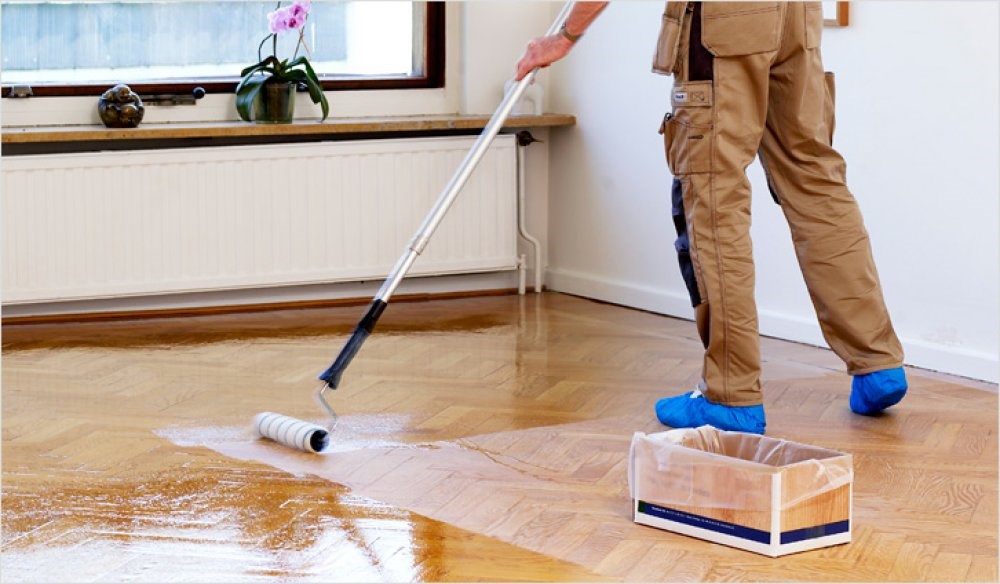
Repair and restoration
- Dealing with Scratches: Minor scratches can often be repaired using wood filler or touch-up pens that match the colour of the floor. For deeper scratches or gouges, consult a professional for repair options.
- Refinishing: If the finish on your wood floors is significantly worn or damaged, refinishing may be necessary. This involves sanding down the surface to remove the old finish and applying a new one. It’s a labour-intensive process best left to professionals.
- Addressing Water Damage: If your wood floors have been damaged by water, such as from a leak or flood, act quickly to dry the affected area and prevent mold growth. Consult a professional restoration service if the damage is extensive.
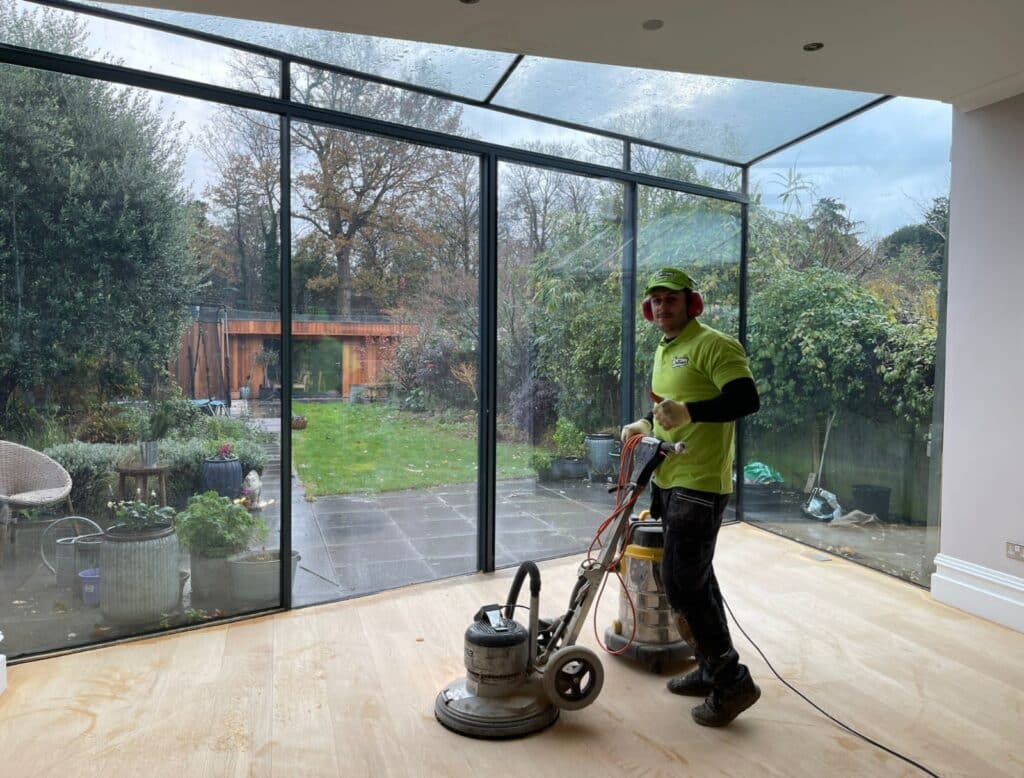
Long-Term Care
- Protecting Against Sunlight: Direct sunlight can cause wood flooring to fade and discolour over time. Use curtains, blinds, or UV-blocking window films to protect your floors from prolonged exposure to sunlight.
- Regular Maintenance Schedule: Establish a regular maintenance schedule for your wood flooring, including cleaning, inspections, and any necessary repairs or refinishing. Consistent care will help prolong the life of your floors and maintain their appearance.
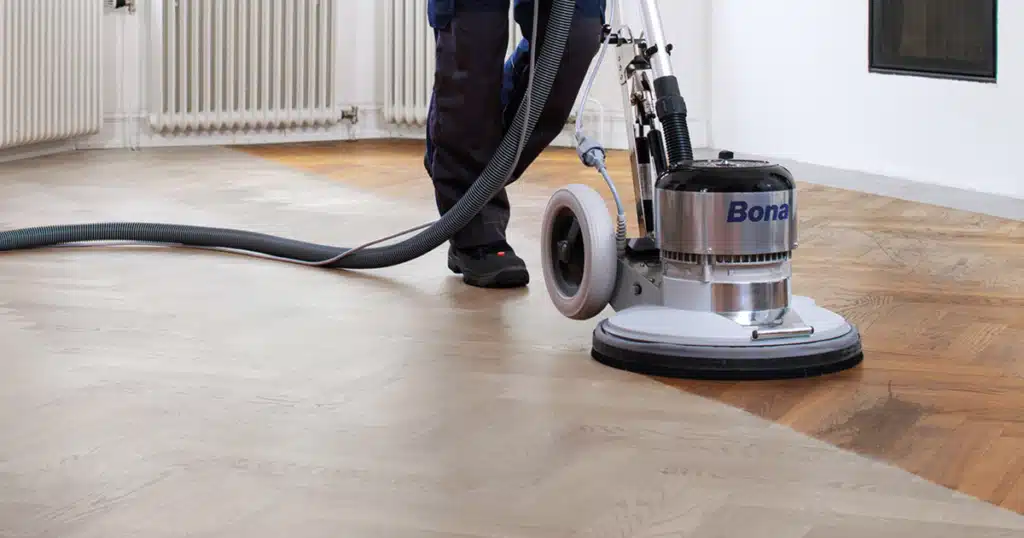
Conclusion
Bespoke wood flooring offers British homeowners and businesses a unique opportunity to create spaces that are both beautiful and functional, tailored to their individual style and needs. Throughout this journey into the world of custom wood flooring, we’ve explored the charm of personalisation, evaluated various options, considered design considerations, and highlighted the importance of sustainability, maintenance, and care.
From selecting the perfect wood species and finish to choosing patterns and layouts that complement British décor, bespoke wood flooring allows for endless possibilities in creating spaces that are as unique as the people who inhabit them. By prioritising sustainability and ethics in sourcing materials and adopting proper maintenance practices, we not only preserve the beauty of our floors but also contribute to the well-being of our planet and communities.
As we conclude this exploration, we invite you to embark on your own journey of creating bespoke wood floors that reflect your personality, enhance your environment, and stand the test of time. Whether it’s a cosy cottage retreat, a bustling urban café, or a grand historic hotel, custom wood flooring adds a touch of elegance and sophistication to any space, leaving a lasting impression on all who walk upon it.
Embrace the beauty of bespoke wood flooring and let your imagination soar as you transform your vision into reality, one plank at a time. With the right craftsmanship, care, and attention to detail, your bespoke wood floors will continue to inspire admiration and awe for generations to come, enriching the lives of all who experience their timeless allure.
Thank you for joining us on this journey through the beauty of bespoke wood flooring in British homes and businesses. May your floors be as unique and remarkable as you are.

Sanding
We provide virtually dust-free sanding with our continuous belt machinery with mobile extraction units, giving you a safer environment for your family.
Oiling
This organic finish not only adds beauty to your home but also has exceptional water-repellent characteristics, making it easier to clean and maintain.
Waxing
This natural floor finish offers the softest and most mellow appearance – and leaves your floor able to breath.
Buffing
Using soft buffing machines (and hand-polishing where required) will bring a wonderful sheen to your newly-finished floor.
Repairs
We offer a full assessment of your wooden floors to determine what repairs are needed to provide the perfect working surface for the later stages of sanding, staining and sealing.
Restoration
We offer a comprehensive restoration process designed to address floors that are improperly fitted or damaged over time through wear and tear.
Request a fixed price quote for your wood floor restoration now
Simply enter your postcode below to get started.
Services
Wood Floor Sanding Wood Floor Restoration Wood Floor Scratch Repair Squeaky Wood Floor Repair Parquet Floor Sanding Parquet Floor Restoration Commercial Floor Sanding Church Floor Sanding Community Centre Floor Sanding School Floor Sanding Gap Filling Gap Filling with ResinCopyright © Mr Sander®
Privacy & Cookies Terms & Conditions Complaints Procedure Cancellation Rights Sitemap